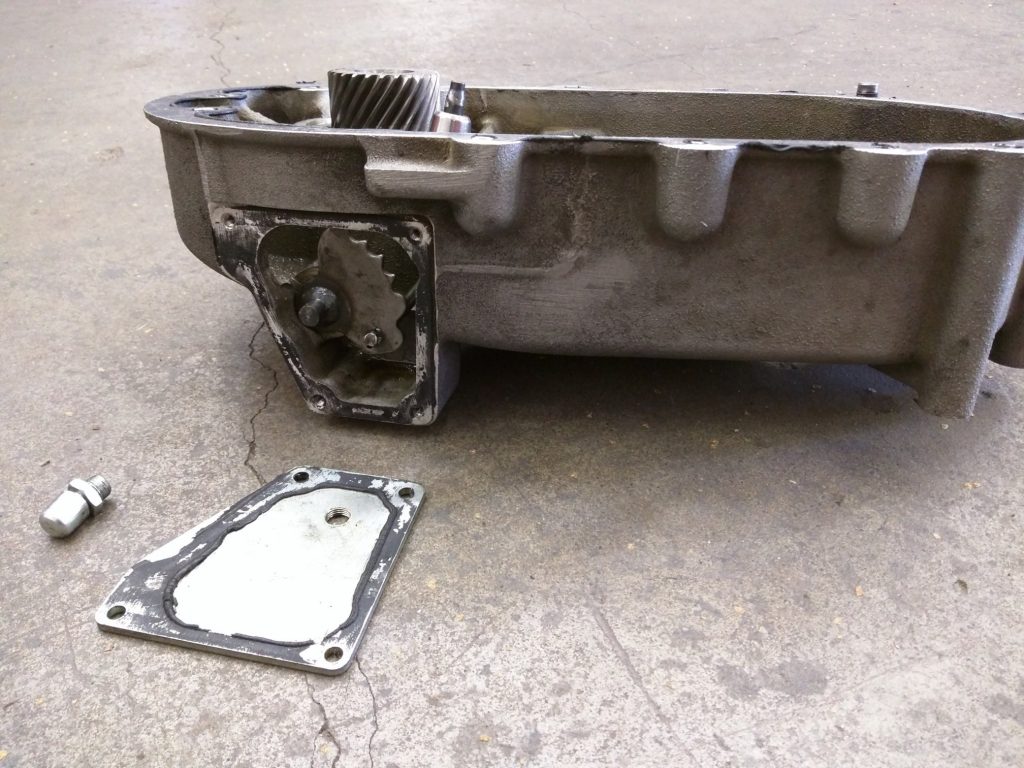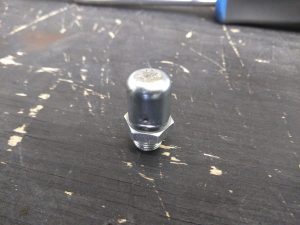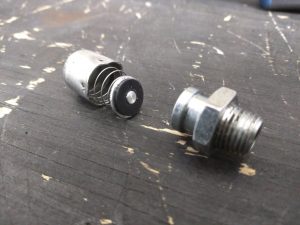One inspection I perform on a 12,000 mile service is a check of the level and condition of transaxle fluid. Most often the lubricant appears unremarkable, but occasionally I find the oil is milky, opaque and overfull. In conventional cars this usually means that coolant has contaminated the oil, which can leak happen to engine oil through a head gasket leak or to transmission fluid through a transmission cooler.
When I first saw Think gearbox fluid that looked like a strawberry milkshake, I scratched my head and decided that coolant must be leaking in past the input (motor) shaft seal. Coolant flows from the PCU into the motor and out to the radiator. And I was almost correct, but very, very wrong. The coolant flows into the motor, but only a very thin jacket that surrounds the stator and rotor– it does not flood the space between the rotor and stator. That space is filled only with air, so the transaxle’s input shaft seal’s only job is to keep transaxle fluid from getting out of the transaxle and into the motor– there’s no way moisture could be getting into the transaxle via input shaft seal.
But I was utterly ignorant of this when I thought I was repairing leaky transaxles by removing motor/transaxle assemblies from the car, separating the two and replacing the input shaft seal. Each time I performed that service it was a complete waste of time and money, and I regret that customers paid for that service.
So instead of coolant, it must be water getting into the gearbox and contaminating the fluid. There are only a few possible places that this might occur: the axle seals, the seal between the case halves, the parking pawl seal and a plate with a breather valve on top of the transaxle. I think that the axle seals and sealing surface between the case halves would definitely show oil seeping out if it was possible for water to get in, and I don’t think I have seen more than 1 or 2 slightly seeping axle seals and never any seepage at the case parting surface. The parking pawl shaft seal is sometimes a little bit oily, but the shaft protrudes down out of the transaxle, so it’s not as if water would ever be sitting on the seal; I suppose while driving in the rain it might be continually wet from the road spray. But the plate on top of the transaxle is now my prime suspect.
The plate itself is sealed to the transaxle case by RTV (room-temperature vulcanizing) silicon FIP (form-in-place) gasket and four small bolts. The potential for human error in applying the silicon makes it a likely source of the leak in my opinion. A small gap around two edges of the plate and the cast surface of the transaxle might be able to hold water against a poorly applied gasket until the transaxle heats and cools enough to suck the water in.
A breather valve threads into the plate (and I believe they are pipe threads– that is, they taper down so the valve does not screw in all the way to the flange, but just far enough until it’s tight and the threads seal), but I don’t see any thread sealant (e.g. teflon tape) on the one example that I have disassembled. So I think the valve threads are also a potential water entry point.
Finally the breather valve itself: As far as I can tell the valve is designed to allow air to escape from inside of the transaxle as it warms up from the friction of being driven. Otherwise, pressure might build and cause oil to push out past the axles seals (or elsewhere). The breather is a check valve (a one-way valve); a spring prevents anything from flowing back the way that the warm air escaped. So after the transaxle has warmed up and cooled down, there should probably be a slight vacuum inside the transaxle. When I check transaxle fluid on a Prius, I am accustomed to hearing air suck in, gurgling past the fluid around the edges of the fill plug. But these breather valves are not really highly sophisticated devices, and I imagine it is possible that water could get drawn up and into them, though it seems less likely to me than the threads or the plate gasket.
Feeling very uncertain about all this, and especially sheepish after being such a fool about my input shaft theory, I reached out for help. It took a few dead-end emails and web forms, but eventually I got in touch with a representative of the transaxle manufacturer, Oerlikon Graziano in the US. (I think there has recently been some big conglomeration, so the Italian drive manufacturer is now part of a company headquartered in Switzerland and with locations all over the world. But this US representative seemed to know what he was talking about. So I’ll just copy and paste the pertinent parts of our exchanges here:
First, regarding the water issue specifically:
“This transaxle uses the same seal that we use on nearly all of our axle products. We call it a breather and it is a bit of a pressure relief and one way valve system. About 3PSI internal pressure releases it and then, if the rubber is still in good shape it can hold a bit of an opposite vacuum when it cools. This may, in some cases cause the seals to “suck in” some moisture, particularly when the hot transaxle is dunked in cool water.
“Alternatives to this breather exist, but the most reliable is the one used in the off road industry. Essentially you take a length of tubing, clamp one end to the nipple that comes off the main body of the breather (after you rip the head/seal and spring off). Take the other end and loop it 2-3 times and tie wrap it to a cross member above any anticipated water line. If you just want new ones, I can get them.
“I can get you the replacement breather PN 72154
“On the home made vent, clear tubing, that is oil resistant is good. I have seen clear fuel line, so that would work”
And now, a bunch of other stuff:
“The axle is out of production, so I cannot promise anything, however it is quite possible that we have some pieces.”
“Oil is a fairly open issue. We can apply ATF to cover the lubrication needs and it provides the best efficiency and the highest noise. Heavier lube reduces noise, but also efficiency, all the way to 90W gear lube. In the middle, any of the straight 20-30, 40 or 50 W non detergent motor oils are OK. Synthetic is OK, but not required. This thing should not be getting very hot to need synthetic.
“We actually do lubrication tests to check if bearings are getting oil at various speeds and angles of inclination. So with the heavier oil we may have found that it stuck to the bearings better, while the ATF ran off and needed to be kept at a higher fill point. Other than hurting efficiency anything up to the max fill level should be OK.
“This transaxle was used also by Wheego for a short while, in a different ratio. So, if anyone is curious about trying an 8.5:1 I could help you find a sample. I also know a supplier that mated an AC motor to this unit, so if you need a new motor/controller, they are not cheap, but available.
“What sort of hard parts do you anticipate needing? All the history I have on these types of transaxles comes from the similar but lighter golf axles. The gears never wear out. The bearings are the weak point and start making noise, so you catch them before they go catastrophic (usually). We have seals and bearings. I am sure we can find case halves and other components.”
(The seals and bearings are all standard parts that we can source through McGuire Bearing Company or elsewhere. If you decide you want to rebuild a transaxle yourself I can give you the part numbers.)



